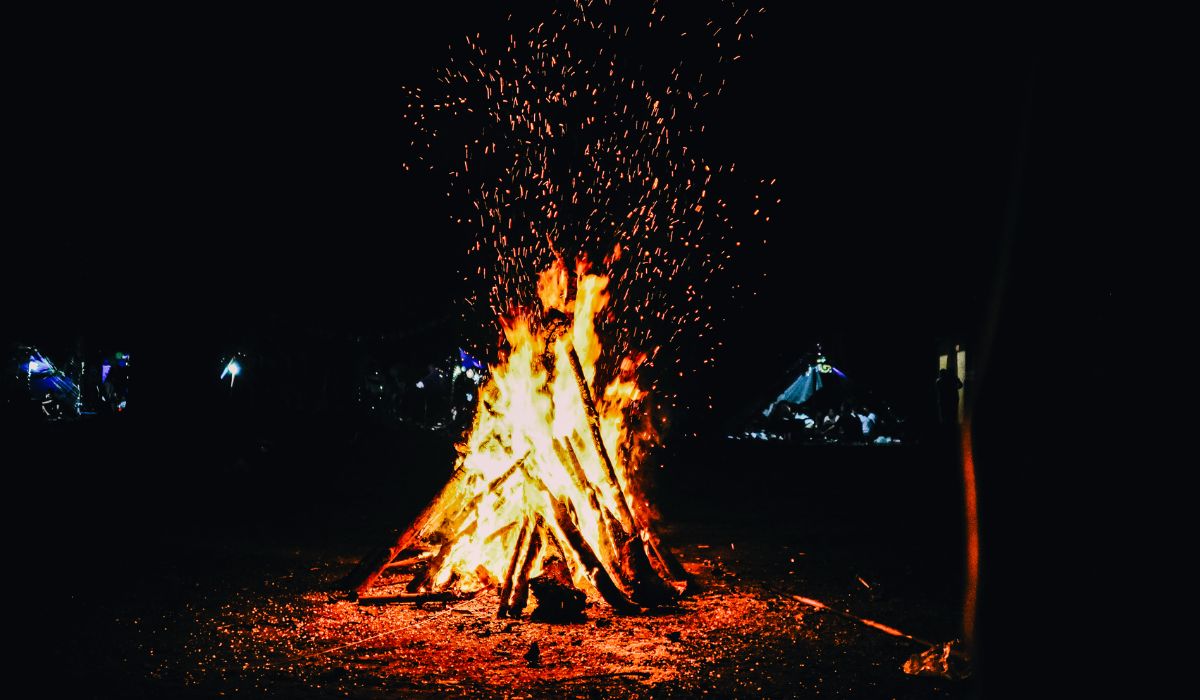
The group must have matches in waterproof packaging. Each participant in the hike must have their box of fully sealed matches (in addition to the group supply and in addition to common matches). And they don’t keep these matches somewhere in their backpack, but always with them. If a tourist wears a rain jacket, they are kept in the breast pocket; taking off his rain jacket, he immediately puts the matches in his trousers or shirt pocket.

Various methods are used to seal matches. You can put several matches along with the side wall of the matchbox in an empty hunting cartridge case, which is then filled with paraffin. You can put a box of matches wrapped in paper in a metal box and then fill the joint between the lid and the body with sealing wax.
Instead of sealing wax, you can use insulating tape and adhesive tape. It’s simpler but less reliable. A combination of several methods gives good results. For example, putting matches in a metal box and then placing it in a plastic bag. A simple and effective way to preserve matches is as follows: matches should be dipped in melted wax (paraffin). After this treatment, they are not afraid of dampness and light up even in the rain.
To successfully light a fire in the rain, you need to take with you from home artificial kindling that is not afraid of moisture – dry alcohol tablets, pieces of celluloid or plexiglass, and a candle stub. It’s hard to say which is better: every traveller has their preferences. It may be more convenient to have a candle.
Dry alcohol is not always available, but celluloid and plexiglass flare up easily and burn very intensely, but they also burn out quite quickly. It is convenient to use a candle if you want it to be preserved and can be used in the future.

Therefore, when a fire is lit with the help of a candle, they cut off a piece one and a half centimetres high from its end (sometimes they don’t take the whole candle directly from the house, but only a small piece from it), but this cinder on the ground, light it and then start putting it on top a cobweb or a thin splinter so that it touches the upper half of the flame, but not the wick (otherwise the candle can easily go out).
To do this, the cobweb is usually laid out in a “hut” or placed on a larger branch, in the manner of a taiga fire of the second type, but only in several layers. The candle burns for a long time; the flame stays in one place all the time, and the cobweb or splinter gradually dries out and begins to flare up.
The candle, in this case, plays the same role as a pile of coals in relation to logs when building a large fire. Of course, you cannot expect to remove the candle stub at any moment to use it again. He will burn in the flames of the fire.
It must be borne in mind that even if thin branches of cobwebs may be wet from the surface, then thicker batches of fuel will be even more wet. To make them ignite faster, you can use the old taiga method. To do this, you need to take a sharp knife and trim the shavings on these sticks without, however, completely separating them from the stick.
Let a curly corolla form on it at one end. These kindling sticks light up very quickly. If the shavings turn out to be small enough and thick enough, then you can even set fire directly from the kindling, along with a cobweb and a splinter. You need to prepare several of these sticks and also make cuts on the remaining twigs and branches of the second and third batches of fuel. They may not be so deep, but they should be located along the entire length and preferably on different sides. By the way, sometimes it is useful to clean even a splinter in this way.

When the fire gets hot enough to start adding larger firewood – the thickness of an arm or more, you need to make similar notches along its entire length, only, of course, now with an axe. Better yet, split each log lengthwise. The inner layers of wood remain unaffected by moisture, no matter how heavy the rain, and catch fire quite easily.
The design of the fire also, to a certain extent, determines the success of the business. Of the designs described above, this best corresponds to the taiga fire of the second type, “three logs”, “hut”, and taiga fire of the third type.
The taiga fire of the second type will be especially good if it is made of logs, chopped along the length, and laid close or almost close to each other. The logs face the rain like bark and have a slope, like the roof of a house. The water rolls down them, and only a very small part of it reaches the fire.








